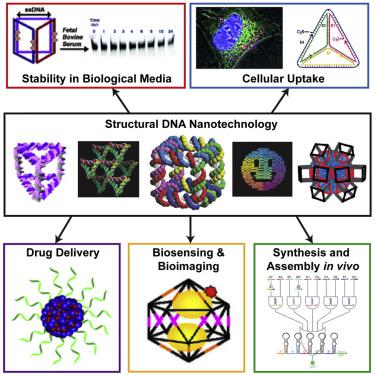Chem ( IF 19.1 ) Pub Date : 2018-03-01 , DOI: 10.1016/j.chempr.2018.02.005 Katherine E. Bujold , Aurélie Lacroix , Hanadi F. Sleiman

|
Over the past four decades, the field of structural DNA nanotechnology has evolved into an accessible approach to generating DNA nanostructures with precise control of size, geometry, and presentation of ligands. Moreover, the biocompatibility of DNA, its programmability, responsiveness to biological cues, ready synthesis, and ease of functionalization place DNA nanostructures as advantageous carriers for applications requiring the transport and selective release of cargo. However, as DNA nanostructures are translated to in vivo systems, they must be specifically designed to be compatible with biological environments. Some of these challenges include the optimization of their stability in biological media, their cellular uptake profile, and their drug encapsulation and release abilities. This review provides an overview of the field of structural DNA nanotechnology and outlines the progress toward the creation of DNA nanostructures to address challenges in biomedicine, as well as strategies that are currently adopted for interfacing them with living organisms.
中文翻译:

与生物学的界面上的DNA纳米结构
在过去的四十年中,结构DNA纳米技术领域已发展成为一种可访问的方法,可通过精确控制大小,几何形状和配体表示来生成DNA纳米结构。此外,DNA的生物相容性,其可编程性,对生物线索的响应性,易于合成以及易于功能化,使DNA纳米结构成为需要运输和选择性释放货物的有利载体。然而,由于DNA纳米结构被翻译为体内系统,它们必须经过专门设计以与生物环境兼容。这些挑战中的一些挑战包括其在生物介质中的稳定性,其细胞摄取情况以及其药物包封和释放能力的优化。这篇综述概述了结构DNA纳米技术的领域,并概述了创建DNA纳米结构以应对生物医学挑战的进展,以及当前为使它们与活生物体接口所采用的策略。































 京公网安备 11010802027423号
京公网安备 11010802027423号